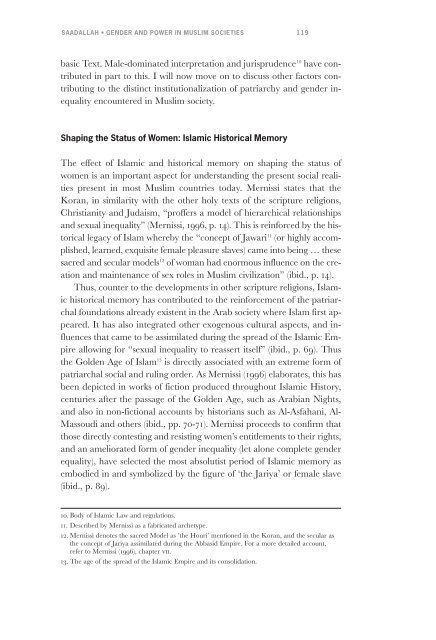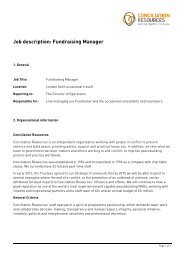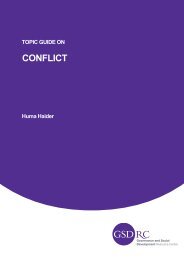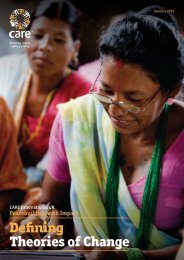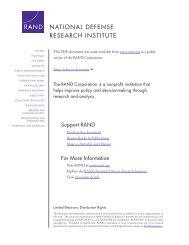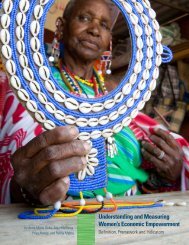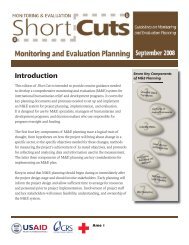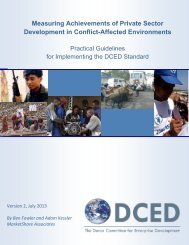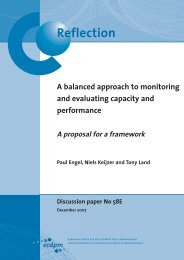Discussing Women's Empowerment - Sida
Discussing Women's Empowerment - Sida
Discussing Women's Empowerment - Sida
Create successful ePaper yourself
Turn your PDF publications into a flip-book with our unique Google optimized e-Paper software.
SAADALLAH • GENDER AND POWER IN MUSLIM SOCIETIES 119<br />
basic Text. Male-dominated interpretation and jurisprudence 10 have contributed<br />
in part to this. I will now move on to discuss other factors contributing<br />
to the distinct institutionalization of patriarchy and gender inequality<br />
encountered in Muslim society.<br />
Shaping the Status of Women: Islamic Historical Memory<br />
The effect of Islamic and historical memory on shaping the status of<br />
women is an important aspect for understanding the present social realities<br />
present in most Muslim countries today. Mernissi states that the<br />
Koran, in similarity with the other holy texts of the scripture religions,<br />
Christianity and Judaism, “proffers a model of hierarchical relationships<br />
and sexual inequality” (Mernissi, 1996, p. 14). This is reinforced by the historical<br />
legacy of Islam whereby the “concept of Jawari 11 (or highly accomplished,<br />
learned, exquisite female pleasure slaves) came into being … these<br />
sacred and secular models 12 of woman had enormous influence on the creation<br />
and maintenance of sex roles in Muslim civilization” (ibid., p. 14).<br />
Thus, counter to the developments in other scripture religions, Islamic<br />
historical memory has contributed to the reinforcement of the patriarchal<br />
foundations already existent in the Arab society where Islam first appeared.<br />
It has also integrated other exogenous cultural aspects, and influences<br />
that came to be assimilated during the spread of the Islamic Empire<br />
allowing for “sexual inequality to reassert itself” (ibid., p. 69). Thus<br />
the Golden Age of Islam 13 is directly associated with an extreme form of<br />
patriarchal social and ruling order. As Mernissi (1996) elaborates, this has<br />
been depicted in works of fiction produced throughout Islamic History,<br />
centuries after the passage of the Golden Age, such as Arabian Nights,<br />
and also in non-fictional accounts by historians such as Al-Asfahani, Al-<br />
Massoudi and others (ibid., pp. 70-71). Mernissi proceeds to confirm that<br />
those directly contesting and resisting women’s entitlements to their rights,<br />
and an ameliorated form of gender inequality (let alone complete gender<br />
equality), have selected the most absolutist period of Islamic memory as<br />
embodied in and symbolized by the figure of ‘the Jariya’ or female slave<br />
(ibid., p. 89).<br />
10. Body of Islamic Law and regulations.<br />
11. Described by Mernissi as a fabricated archetype.<br />
12. Mernissi denotes the sacred Model as ’the Houri’ mentioned in the Koran, and the secular as<br />
the concept of Jariya assimilated during the Abbasid Empire. For a more detailed account,<br />
refer to Mernissi (1996), chapter VII.<br />
13. The age of the spread of the Islamic Empire and its consolidation.


